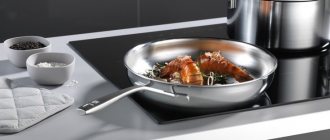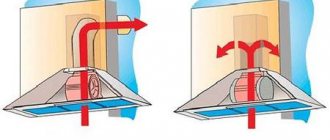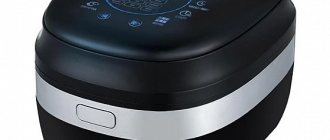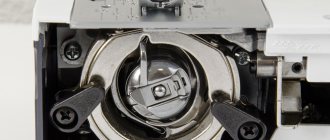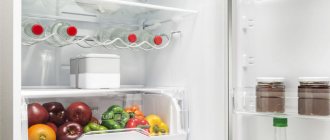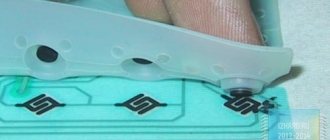In addition to its main purpose - grinding coffee beans, a coffee grinder found in every home is often used to grind other products. In this article, we will tell you what rules should be followed so that the extended use of the device does not radically shorten its service life and, when grinding, the quality characteristics of the crushed products are preserved. If the design, power and materials from which the device is made allow it to be used for grinding other products, manufacturers usually indicate this in the instructions. Millstone coffee grinders have the most universal design. This is due to the ability to adjust the degree of grinding. The device can be configured to produce different fractions of the product. Owners of a rotary (or blade) electric coffee grinder should take into account the power of the device and the quality of its knives. The degree of grinding will have to be adjusted by eye, depending on the period of operation of the device. If you want to get a coarser grind, the product will be crushed unevenly.
What kind of coffee grinders are there?
Coffee grinders are divided into:
- Rotary (rotary) or knife, as they are also called.
- Millstones.
- Manual.
The first two varieties are electric, but their operating principles are different. The manual device is more reliable, but requires time and effort to grind the products. It is very difficult to grind coffee beans by hand - you need the coffee grinder to have a comfortable handle and not cause calluses during daily use.
Important! Coffee grinders are designed for coffee beans, so you can grind other products in them with great care, following the instructions. If the device is under warranty, the service will refuse to repair it for free, since the user himself caused damage to the electrical device.
“The need for invention is cunning”
And what not is ground in a coffee grinder! For ease of use, grind sea salt. After all, the smaller it is, the easier it is to dissolve. Grind dried vegetables, fruits and berries without seeds. Cocoa beans are ground to make the drink.
Delicious recipe! Frozen seafood recipes with photos
What is Kolivo without poppy seeds? True, grinding it in a mortar is a rather troublesome and time-consuming task, but you can grind poppy seeds for kutya in a coffee grinder in a matter of seconds. Some users even manage to beat egg whites in a coffee grinder!
How it works and where to use the rotary
The principle of operation of a rotary coffee grinder is to quickly move the knives - one or two, depending on the model. There are removable and non-removable knives. In the second case, they cannot be removed and cleaned, so you need to use them carefully and only within the limits of what is permitted.
Products that are placed in a knife grinder are cut. This is the advantage of the rotary device - more aromatic substances remain in small particles, since they are not compressed, but dissected. Essential oils also remain inside.
What can you do with this type of coffee grinder? The coffee grinder is intended for grains and spices, as well as:
- cereals that are low in fat, such as oatmeal or buckwheat;
- breadcrumbs;
- pieces of chocolate, but you need to act impulsely so that the device does not overheat and melt the sweets;
- flax seeds, sesame seeds;
- nuts, but not walnuts, as they contain a lot of fat.
If products contain oil, they are partially crushed so that the pieces are larger and the liquid fraction does not flow onto the coffee grinder bearing.
A rotary coffee grinder is not designed for powdered sugar - this can damage it forever. Why you can’t grind sugar in a rotary coffee grinder: the crystals quickly melt when heated, turning into caramel. Burnt sugar drips onto the internal parts of the device and hardens on them. The knives will no longer be able to rotate, especially if the device is non-separable.
Coffee grinder
Coffee grinders are manual and electric. In a manual coffee grinder, the mechanism is driven by your efforts. Electric coffee grinders operate on mains power.
A coffee grinder is designed to grind coffee. They come in two types: millstone and knife.
In knife grinders, coffee is ground by rapidly rotating sharp knives. The power of the device determines how finely the coffee will be ground. But they are not made particularly powerful, because at a very high rotation speed the coffee can heat up, which will give the final product a burnt taste and smell. This is not acceptable for coffee. Therefore, to make coffee as fine as possible, you need to grind it longer. Knife coffee grinders are great for those who like to brew coffee in a Turk.
Burr grinders are coffee grinders in which coffee is placed between two metal plates and they grind it like the millstones of a mill. Such devices allow you to grind coffee finer and have an adjustable grind level; expensive models have about 14 of them. Coffee ground in such a coffee grinder is excellent for making lattes, espresso, and macchiato. In other words, coffee from a burr grinder is great for making coffee in a coffee machine or coffee maker.
It is not uncommon for a coffee grinder to be considered as a tool for grinding other products, such as sugar, nuts, and spices. Grinding other products is possible, but not recommended. Since grinding other products can lead to equipment damage. For example, the sugar begins to melt and is very difficult to remove from the blades and axle. And small particles and the smell of spices will negatively affect the ground coffee after this. But some coffee grinders come with special attachments for grinding spices.
The principle of operation of millstones
Millstone devices have a different operating principle. Two rollers rotate towards each other and everything that falls between them is crushed. The degree of grinding depends on how close the millstones are set. If you often make Turkish coffee at home, set the grind to the finest setting. For other products, such strong grinding may not be useful.
There are two types of millstones - conical and cylindrical. The first ones cope with all products, do not overheat, do not overcook them. The latter can be more finely tuned for coffee, but it is not advisable to add all other ingredients. Firstly, the smell remains, and secondly, the particles stick between the millstones and interfere with their normal operation.
What can you grind in a burr coffee grinder:
- cereals;
- seeds;
- beans - coffee and cocoa, as well as peas and beans;
- crackers;
- sea salt;
- spices;
- dry herbs.
Very hard components should not be ground with millstones - this will cause their edges to wear off and fail.
Possible consequences
Using a coffee grinder for other purposes, as a rule, leads to the following consequences:
- Dull knives.
- Damage to the mechanism due to the ingress of liquids, oils and other particles.
- Motor failure due to increased loads.
- The appearance of an odor that is very difficult to eliminate.
- This is interesting: How to grind coffee without a coffee grinder at home
Possible problems are directly related to the type of mechanism. Therefore, for the safety of the device, it is important to understand what can be ground in a coffee grinder, except for coffee, taking into account some features:
- Mechanical – they do not operate on mains power, can be disassembled and cleaned, making them suitable for grinding almost anything.
- Rotary (rotary) – has a lockable container and knives for chopping. In most cases, the grinding is not adjustable.
- Millstone - works on the principle of a mill. The main difference is that it grinds rather than cuts the contents of the container.
Some foods can only be ground in certain types of coffee grinders.
| Manual | Millstone | Rotary | |
| Spices, seeds | + | + | + |
| Salt | + | + | + |
| Sugar | + | + | +/- |
| Hard crackers | + | + | +/- |
| Cereals, legumes | + | + | +/- |
| Oily nuts | + | + | – |
| Dry herbs | + | + | – |
| Chocolate | + | – | + |
| Garlic | + | – | – |
| Vegetables and fruits | + | – | – |
| Mushrooms | + | – | – |
| Hard cheese | + | – | – |
| Greenery | + | – | – |
| Meat fish | – | – | – |
The warranty card usually states that you cannot grind in a coffee grinder. Otherwise, this will void the warranty and in the event of a breakdown you will not be able to count on service support.
What products can be ground in a knife grinder?
There are two types of ingredients that can be ground in a blade coffee grinder:
- dry;
- fatty.
In the first case, the device successfully copes with the task. In the second, you need to act more carefully: press the start button pulsed. This way the motor does not overheat. The coffee grinder for nuts and spices is used in economical mode.
How prohibited to use
An electric blade coffee grinder for powdered sugar is not used so that you don’t have to buy a new one. It is advisable to dry the cereals before chopping so that they do not stick to the knives and internal parts - this way you can extend the service life of the device.
Someone tries to beat cold whites in a knife coffee grinder, although it is not intended for liquid products at all and after this procedure it immediately breaks or burns out.
Poppy seeds, which are ground for kutya, contain a lot of fat. It is difficult to grind them efficiently in a rotary device - for this there are special hand-held devices - grinders.
The principle of action is rubbing poppy seeds. Is it possible to grind nuts in a coffee grinder if it is a blade grinder - it is possible if the knives are then removed, washed and dried. If the model is non-separable, it is better to use a blender.
What can you grind in a coffee grinder?
The idea of allowing different edible ingredients into the grinder tank may seem quaint. But not everyone can or wants to grind sugar or nuts through a hand mill to make a pie, especially if there is an electric equivalent in the kitchen. Therefore, the latter can and should simplify their culinary life. Moreover, there are few products that a coffee grinder can successfully grind:
- Spices, herbs;
- Sugar, salt;
- Cereals;
- Rusks;
- Chocolate;
- Nuts.
This list of products can be expanded with large dried fruits. But it is recommended to cut them in half yourself in advance in order to give less load to the miniature engine and cutters.
On a note. The greater the initial fraction and density of the product, the less it needs to fill the unit compartment. For example, it is better to fill the tank 70-80% with sugar and spices, while with cereals - 40-60%.
Spices
All aromatic food additives can be easily ground with a coffee grinder. True, after them it is necessary to wash the compartment so that the upcoming coffee does not turn out to be sharp or bitter. And if the model has been used for a long time, then fine dust from pepper, cinnamon, etc. may enter it. Removable knives and a compartment help to avoid unnecessary odors inside the gadget. But they are not provided in all rotary models. Therefore, their use for crushing spices and herbs is a subjective decision.
Sugar, salt
Sugar and salt are processed without problems by the cutting edges of an electric coffee grinder. Moreover, both products can be poured into the unit compartment at the same time, guided by the ratio required by the recipe. The exception is sea salt. It must be ground separately to obtain a quick-soluble healing substance for bath procedures, cosmetic masks, etc.
On a note. Rotary coffee grinders are limited in adjusting the grinding speed. Therefore, when crushing sugar, it is advisable to periodically release the button of the device so that the sugar does not melt.
Cereals
Cereals are among the fairly solid foods. In addition, the corresponding category itself is diverse - buckwheat, oatmeal, pearl barley. They have to be ground in different cases:
- The child needs to quickly prepare porridge;
- There is no required flour for a certain dish;
- The stomach is disposed to a “soft” diet.
The device will cope with soft oatmeal and small buckwheat with a bang. It is better to pour other large grains such as peas, corn, pearl barley into the tank in small portions - 25-40% of the compartment volume.
On a note. Pre-soaking the grains in water will help soften the grains. By the way, you can prepare spices for the coffee grinder in advance. They need to be heated in a dry frying pan so that they lose their essential oils.
Crackers
An electric mill is also easy to make breading powder. But it is better to crush the bread semi-dry, so as not to wear out the device once again.
Chocolate
Dense cocoa mass easily and quickly turns into chips even when the container is 100% full. However, in the latter it is better to leave some free space.
Nuts
Despite their formidable appearance, nuts, be they hazelnuts or walnuts, are easy for the thematic unit. They don’t even have to be pre-soaked like some grains. The main thing is to comply with the permissible filling rate of the compartment.
What can be put into a millstone device?
What can you grind in a burr coffee grinder besides coffee beans:
- Spices – chili, black pepper, cinnamon sticks, vanilla, cardamom, mustard seeds.
- Seeds – flaxseed, sesame, sunflower, pumpkin.
- Horseradish and garlic in dry form.
It is recommended to heat the spices a little in a frying pan or in the oven to warm up the essential oils - then they will be more fragrant.
Is it possible to grind grain with a coffee grinder? Yes, it has little fat and is dry enough to stick to the parts. The cone model, which is often chosen for cereals and coffee at the same time, copes with any product.
Is it possible to grind nuts if the millstones are conical: it is possible, since they do not overheat, but immediately go into the compartment for crushed products. If you frequently grind walnut kernels, you will have to disassemble and clean the millstones more often, especially if they are metal, so as not to rust.
What can't be crushed
Components that are too hard should not be placed into the millstones. These can be seeds to make a tincture for treatment. Sharp edges can even damage metal if you frequently grind prohibited ingredients.
Each device comes with instructions that tell you what can and cannot be put into this particular device. Considering the cost of millstone devices, and they are several times more expensive than rotary ones, it is recommended to find the section regarding products in the instructions and study it well.
To determine whether it is possible to grind cereals in a coffee grinder, you need to know the power of the device. It may only be intended for coffee beans. Even among coffee, there are varieties that are much harder than others, as they grew in mountainous areas with low oxygen levels. These are expensive varieties and require a more powerful grinding device.
What not to grind in a coffee grinder
Since there are many “traditional craftsmen” among coffee grinder users, the rotor and chutes of the device often break due to overload and clogging. The latter occurs due to too small fractions, while the culprits of wear of the mechanism can be not only solid products, but also fibrous ones. For example, orange peels and onions often become entangled in the propeller. This leads to the following list of products prohibited for use in a coffee grinder:
- Nutshell;
- Greenery;
- Citrus peel;
- Currant-raspberry branches (for making tea);
- Fish bones.
There are powerful and sophisticated food processors for them. The remaining food components are too tough for the coffee grinder. Although it is better that it serves its intended purpose.
Household appliances Coffee grinder
Manual device for grinding food
Is it possible to make powdered sugar in a coffee grinder if it is manual? It is in manual models that this can be done safely. The rotation speed of the knives is low, so the crystals do not overheat, melt or turn into caramel. The process takes longer, but the powdered sugar in the coffee grinder turns out crumbly. It is also possible to check the degree of grinding.
In addition to grinding sugar, manual models have many advantages:
- The coffee powder can be adjusted to any grind level.
- The grains do not overheat and do not become bitter when cooked.
- One bookmark is enough for one serving so that essential oils do not oxidize in the air.
The cost of a manual coffee grinder is quite affordable, and replacement parts are on sale - if necessary, you can buy replacement knives.
How to grind coffee without a coffee grinder
A blender is a universal device that can be used instead of a coffee grinder. For a blender to cope with grains, it must have 4 blades, at least 2, but then the degree of grinding will be coarse.
This powder is not suitable for Turkish coffee - you will have to brew and infuse it to make the drink invigorating. The fact is that caffeine is extracted better and faster if the coffee is ground into dust.
There are several negative aspects when using a blender as a coffee grinder:
- you need to close the container, otherwise the grain will scatter throughout the kitchen;
- knives wear out quickly - they will have to be sharpened.
As an option, you can use a coffee blender temporarily, for example, while the coffee grinder is being repaired.
A meat grinder is the second way to grind grains. It is advisable that it be used only for grains. Knives are selected for the finest grinding. Both manual and electric models are suitable.
A hammer, as well as a bag and a towel, can grind grain just as well as a blender. This method will work temporarily: put the coffee in a bag and wrap it in a towel, then tap it well with a hammer. The grinding will be uneven, but it is quite suitable for a French press or geyser coffee maker.
Which is better - a blender or a coffee grinder?
These two devices are designed for different actions, so you can replace one with the other temporarily. It’s better to have both in your household than to buy and constantly use, for example, a blender. Repairing knives or buying new ones will cost more.
It is better to use a coffee grinder for cereals less often, but grinding wheat or oatmeal in a blender will be faster and safer. The same goes for nuts and sugar.
The best inexpensive models of burr coffee grinders (up to 5,000 rubles)
Burr coffee grinders have always been more expensive than rotary ones. But today a good device can be purchased at a reasonable price. Let's consider the best models priced up to 5,000 rubles.
De'Longhi KG 89
pros
- Quiet
- Stylish design
- Compact
- There are 3 grinding modes - coarse, medium, fine
- Easy to use, easy to clean
- Sealed coffee tray, nothing spills
Minuses
- Coffee sticks to the sides of the container due to static electricity
- There is no grinding dosage regulator in portions, for one cup
- In fine grind mode the powder is not too fine, this can be resolved by manually adjusting the burrs
Secrets of making nut flour
For confectionery products it should be finely ground. This is primarily flour, and not just ground nuts. It is very important that when grinding nuts there is no release of oil, otherwise flour will not turn out. If you decide to grind nuts in a coffee grinder, add them in small batches and turn on the grinder for no more than 20 seconds, otherwise the blades will overheat, the nuts will release oil and stick together. Shake the coffee grinder periodically to prevent the nut flour from sticking to the walls and blades. If this does happen, it means the nuts are too wet and you need to dry them in the oven for 5 minutes at 150 °C.
When you sift the nut flour through a sieve, the remaining grains of nuts can be put back into the coffee grinder, ground and sifted until all the nuts turn into flour.
There are some features of working with different nuts. For example, not everyone knows how to make hazelnut flour without soaking. The fact is that the skin of this nut cracks when toasted, and then is easily removed if you pour the nuts onto a towel and rub, so you don’t have to soak the hazelnuts. Just pour boiling water over the pistachios and then dry them in the oven.
How coffee grinders work
The operating principle of the device is not complicated. To get results, whole grains must pass through the millstones. The size of the resulting crushed particles depends on the distance between these structural elements of the device. The grinding procedure occurs in this order:
- Whole coffee beans are placed in the upper reservoir of the burr grinder.
- If the device is manual, it is started by rotating the handle. If the coffee grinder is electric, then you need to press the only button on the body.
- The grains are crushed and poured into the lower compartment when finished.
- The ground coffee is taken out from the second tank.
The operation of the device is simple and does not require special skills. Cannot be used with cover removed.
Which manual coffee grinder should you choose?
The choice of coffee grinder is based on personal preference. The best manual coffee grinders are smaller in size and usually have a nice mill-like design. There are 2 types:
- European. In terms of external parameters, it is similar to mills.
- Eastern. The handle is removable, installed on top.
When deciding which coffee grinder is better, manual or electric, you should try to use both options. Manual requires physical effort. You can't grind anything except coffee in it. Grinding adjustment is provided, but there are not many modes. The design of millstones, the principle of operation and the materials from which they are made coincide with electric mills. It is better to choose manufacturers from the rating of well-known coffee brands (De'Longhi, Krups, Kifort, Bosch, etc.). You can purchase the device inexpensively, from 300 rubles.
To understand how to choose an electric coffee grinder, you need to decide on the functionality that will be needed. For picky coffee lovers, the simplest of coffee grinders are suitable, without options for choosing grinding modes (Krups). Experienced coffee lovers need to buy a device with the most comprehensive list of functions.
